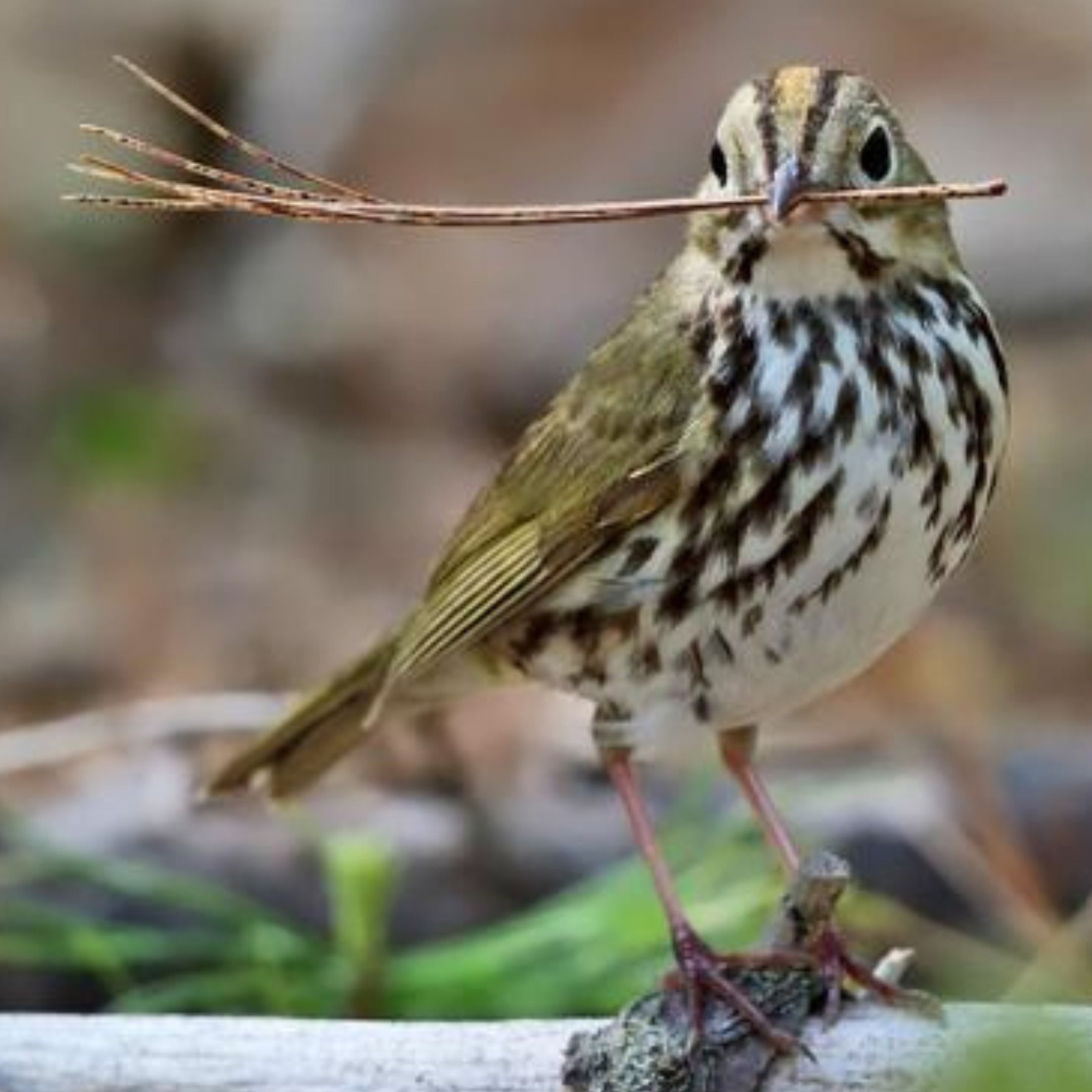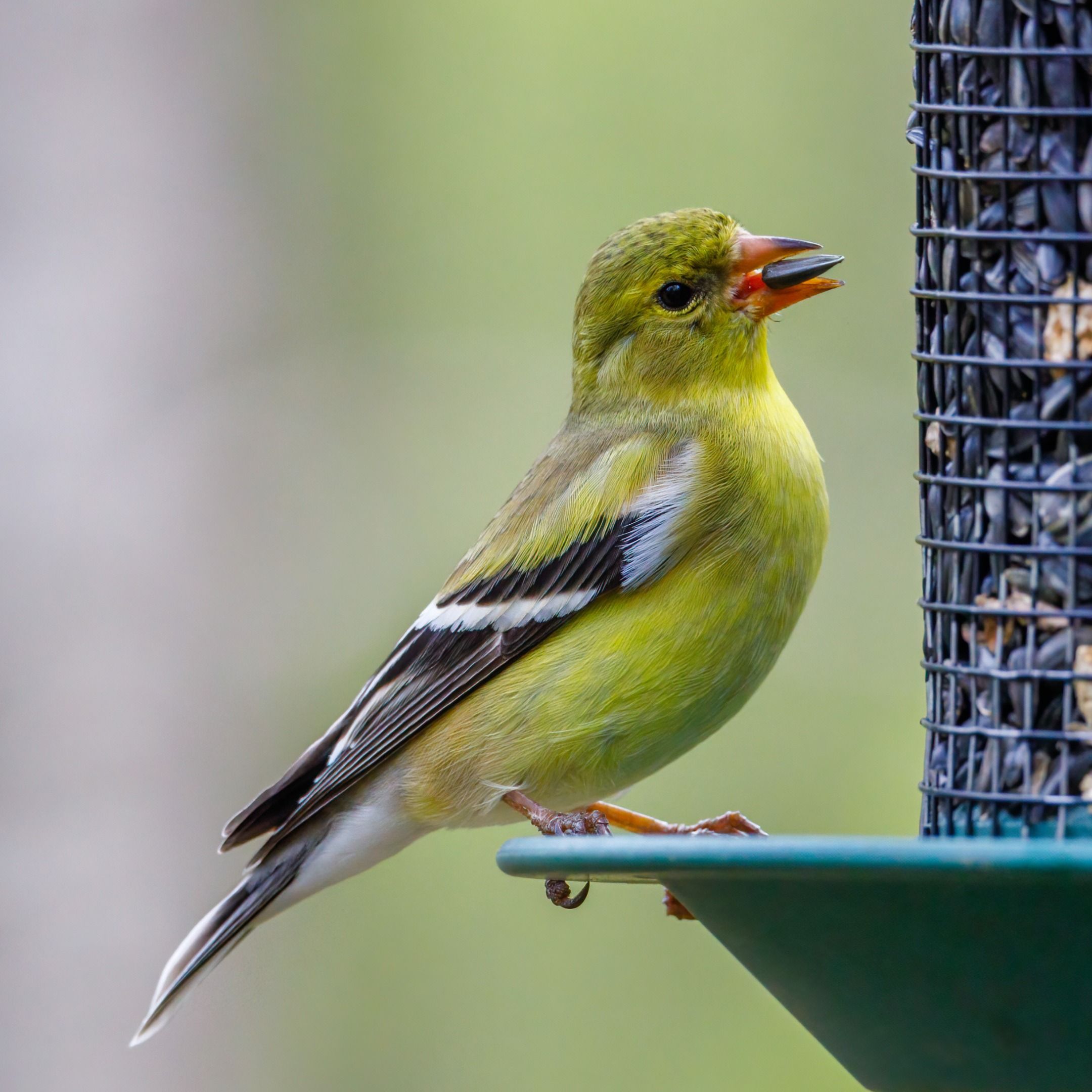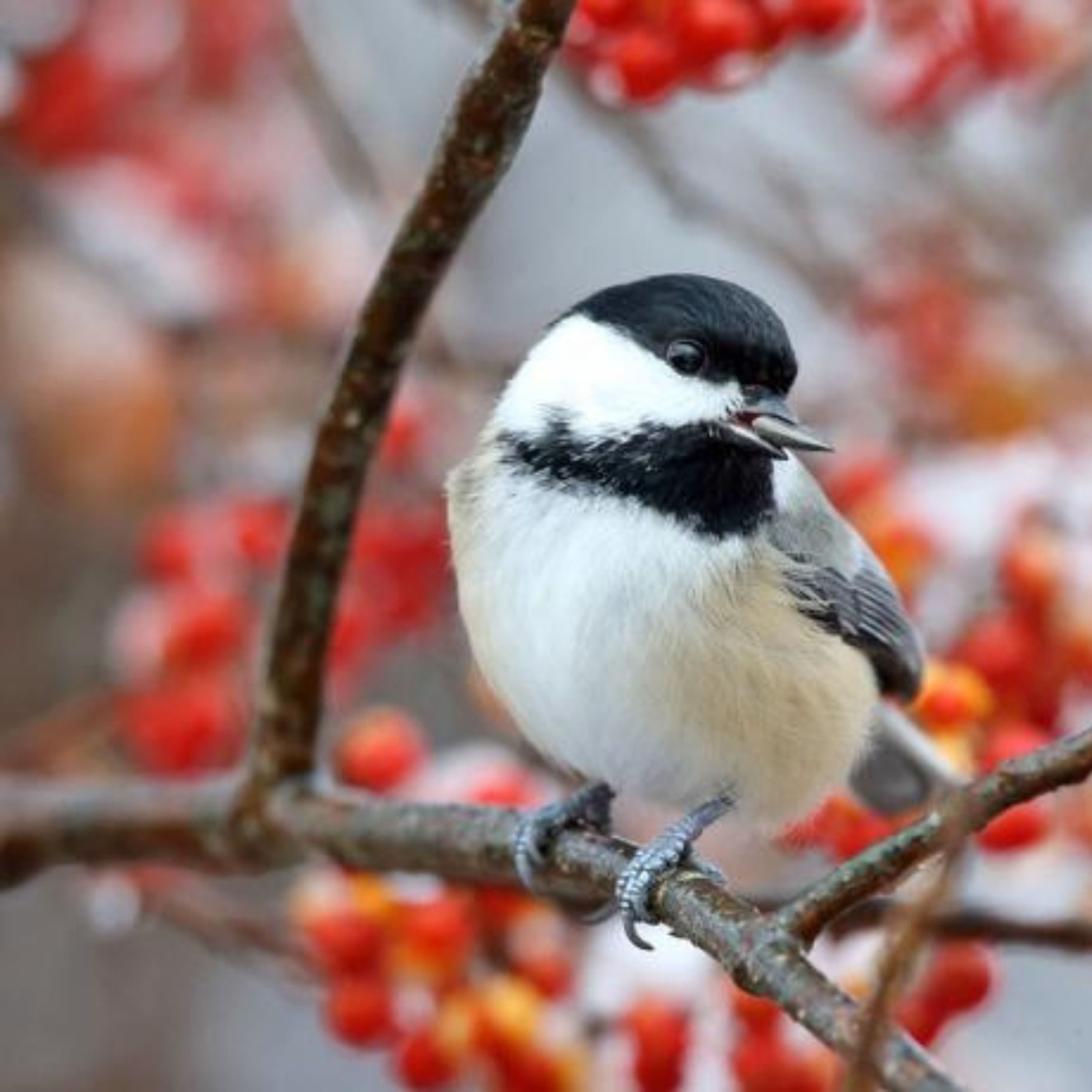Discover BirdNote Daily
BirdNote Daily

1100 Episodes
Reverse
When a new generation of birds hatches, they copy the songs they hear from nearby adults. A young bird’s first attempts aren’t perfect. But like any young musician, they improve with practice. Here at BirdNote, we’ve heard from many listeners who say they enjoy listening to the show with children or grandchildren. Educators use our shows in classrooms as a teaching tool. Help support BirdNote’s mission to inspire the next generation of bird-lovers by making a donation now.More info and transcript at BirdNote.org. Want more BirdNote? Subscribe to our weekly newsletter. Sign up for BirdNote+ to get ad-free listening and other perks. BirdNote is a nonprofit. Your tax-deductible gift makes these shows possible.
A bird of prey in the American Southeast takes grace to an utterly new level. It's the Swallow-tailed Kite. A sleek raptor with a deeply forked tail, the Swallow-tailed Kite almost never flaps its wings. The bird makes sudden tight turns, upside-down moves, and quick backward dives, all by pivoting and moving its tail. Kites snatch insects out of the air and take lizards and snakes off leaves with their talons. Then they transfer prey from their talons to their hooked beaks, all while on the wing.More info and transcript at BirdNote.org. Want more BirdNote? Subscribe to our weekly newsletter. Sign up for BirdNote+ to get ad-free listening and other perks. BirdNote is a nonprofit. Your tax-deductible gift makes these shows possible.
Gulls seem so much a part of the sea that we often just call them "seagulls," a colloquial title for these graceful, ubiquitous creatures. Twenty-two species breed in North America. The Pacific coast is home to the aptly named Western Gulls. The familiar Ring-billed Gull nests all across the northern states and Canadian provinces. Herring Gulls breed along the Great Lakes and Northeast waterways, while these Laughing Gulls nest all along the Atlantic and Gulf coasts.More info and transcript at BirdNote.org. Want more BirdNote? Subscribe to our weekly newsletter. Sign up for BirdNote+ to get ad-free listening and other perks. BirdNote is a nonprofit. Your tax-deductible gift makes these shows possible.
Parrots are among the smartest of birds. But are they clever enough to know each other by name? Research conducted by ornithologist Karl Berg suggests the answer might be yes. Berg’s studies of Green-rumped Parrotlets — such as the one pictured here — indicate that every parrot in a family flock has a distinct vocal signature learned from its parents. When others in the flock hear it, they know precisely who’s calling.More info and transcript at BirdNote.org. Want more BirdNote? Subscribe to our weekly newsletter. Sign up for BirdNote+ to get ad-free listening and other perks. BirdNote is a nonprofit. Your tax-deductible gift makes these shows possible.
May in an Eastern hardwood forest, and the chorus of spring birdsong is nearing its peak. The Carolina Wren, a year-round resident, has been singing since the end of winter. The resounding notes of this Ovenbird let us know it has returned safely from Belize, after a long flight across the Gulf of Mexico. A Chestnut-sided Warbler joins in, having returned from winter in Costa Rica, to the same patch of woods in which it nested last year. By late May, the last of the migrants has arrived from the tropics.More info and transcript at BirdNote.org. Want more BirdNote? Subscribe to our weekly newsletter. Sign up for BirdNote+ to get ad-free listening and other perks. BirdNote is a nonprofit. Your tax-deductible gift makes these shows possible.
Poet Craig Santos Perez grew up on the island of Guam, and later moved to Hawai‘i where his children were born. Both are places that once flourished with unique and diverse bird life, but because of invasive species and climate change, have seen so much loss and extinction. In this episode, he shares poetry that explores his relationship with lost and endangered wildlife and that reflects on the future his daughter will inherit.More info and transcript at BirdNote.org. Want more BirdNote? Subscribe to our weekly newsletter. Sign up for BirdNote+ to get ad-free listening and other perks. BirdNote is a nonprofit. Your tax-deductible gift makes these shows possible.
In this episode of BirdNoir, the private eye gets a call from H. Jon Benjamin about unusual Wild Turkey behavior. A male turkey (known as a “tom”) won’t leave his car alone. He keeps tapping his beak on the car. Then the turkey starts circling the house and looking in all the windows. The private eye reveals how things look from the turkey’s perspective, which points the way to a possible solution.More info and transcript at BirdNote.org. Want more BirdNote? Subscribe to our weekly newsletter. Sign up for BirdNote+ to get ad-free listening and other perks. BirdNote is a nonprofit. Your tax-deductible gift makes these shows possible.
Morning is a great time for birding – that’s the peak of singing and foraging activity for many species. But it’s not the only time to experience birds. Some species, such as American Robins, sing for much of the day. Daytime predators such as hawks and cormorants are active in the middle of the day. Some birds such as Common Nighthawks sweep the sky for insects at dusks. And owls come awake at night.More info and transcript at BirdNote.org. Want more BirdNote? Subscribe to our weekly newsletter. Sign up for BirdNote+ to get ad-free listening and other perks. BirdNote is a nonprofit. Your tax-deductible gift makes these shows possible.
Birds like finches, chickadees and Northern Cardinals love sunflower seeds, but each species uses a different strategy to extract the meat. When a finch plucks a sunflower seed from the feeder, it uses its tongue to maneuver the seed lengthwise into a groove on its beak. As it closes its beak, a slight back and forth action slices open the hull, and a small sideways movement husks the seed, while the tongue may help extract the kernel. But chickadees lack the heavy duty, seed-slicing beak of a finch. Instead, they hammer and chip the hull open with the tip of the bill to extract the goods.More info and transcript at BirdNote.org. Want more BirdNote? Subscribe to our weekly newsletter. Sign up for BirdNote+ to get ad-free listening and other perks. BirdNote is a nonprofit. Your tax-deductible gift makes these shows possible.
Birding is often best in the least likely places. At sewage treatment plants, watch for ducks and gulls - and raptors keeping watch over them all. Another place might be your local landfill or dump. The Brownsville, Texas dump was, for years, the only place in the US you could find this Tamaulipas Crow. For a more sedate birding adventure, visit a cemetery. Especially in rural areas and in the Midwest, cemeteries are often repositories of native plants, and thus magnets for migratory birds, which find food – and cover – in those green oases.More info and transcript at BirdNote.org. Want more BirdNote? Subscribe to our weekly newsletter. Sign up for BirdNote+ to get ad-free listening and other perks. BirdNote is a nonprofit. Your tax-deductible gift makes these shows possible.
Poet Claire Wahmanholm's work focuses on nature and the environment. As she was walking around a nature preserve north of Chicago, Claire was listening for birds but realized there was something else she was hearing: the ever-present hum of a nearby highway. “When you're trying deliberately to hear something else you really notice it,” she says. That experience inspired a poem, “You Can Always Hear the Highway.”More info and transcript at BirdNote.org. Want more BirdNote? Subscribe to our weekly newsletter. Sign up for BirdNote+ to get ad-free listening and other perks. BirdNote is a nonprofit. Your tax-deductible gift makes these shows possible.
Cactus Wrens, which may nest several times between March and September, carefully orient their nests in tune with the season. These bulky twig structures have a side entrance that curves toward the inner chamber. When building a nest for the hot months, the wren faces the opening to receive the afternoon breeze. By contrast, a Cactus Wren building a nest in early March orients the entrance away from the cold winds of that season, keeping the chicks snug and warm.More info and transcript at BirdNote.org. Want more BirdNote? Subscribe to our weekly newsletter. Sign up for BirdNote+ to get ad-free listening and other perks. BirdNote is a nonprofit. Your tax-deductible gift makes these shows possible.
Green-winged Teal are North America's smallest dabbling duck, at just over a foot long and weighing less than a pound. The male has a cinnamon brown head with a band of green behind the eye. Both males and females have a green bar on the wing that gleams like an emerald when the sun strikes it. During courtship, up to 25 males may court a single female at once.More info and transcript at BirdNote.org. Want more BirdNote? Subscribe to our weekly newsletter. Sign up for BirdNote+ to get ad-free listening and other perks. BirdNote is a nonprofit. Your tax-deductible gift makes these shows possible.
The eerie sound of the Great Tinamou can be heard in the lowland jungle throughout much of Central and South America. Secretive — and almost impossible to see — Great Tinamous call early and late in the day. And their voices carry a long distance.More info and transcript at BirdNote.org. Want more BirdNote? Subscribe to our weekly newsletter. Sign up for BirdNote+ to get ad-free listening and other perks. BirdNote is a nonprofit. Your tax-deductible gift makes these shows possible.
With invasive species and climate change, Hawai‘i has experienced so much loss and extinction since Western colonists arrived. But Sam ‘Ohu Gon, the Senior Scientist and Cultural Advisor for the Nature Conservancy of Hawai‘i, is native Hawaiian, and he has done a lot of work connecting Hawaiian culture and tradition to conservation ecology. He hopes that one day, Hawai‘i can be not just a microcosm of ecology, but of conservation as well.More info and transcript at BirdNote.org. Want more BirdNote? Subscribe to our weekly newsletter. Sign up for BirdNote+ to get ad-free listening and other perks. BirdNote is a nonprofit. Your tax-deductible gift makes these shows possible.
When Cliff Swallows arrive on the breeding grounds in North America, the dirty work begins. The swallows scoop up mud in their beaks and carefully build a gourd-shaped nest with a tapered opening. They add a lining of dry grass to keep eggs warm. It takes days of work and a thousand mouthfuls of mud to finish a single nest—and it’s just one part of a large colony.More info and transcript at BirdNote.org. Want more BirdNote? Subscribe to our weekly newsletter. Sign up for BirdNote+ to get ad-free listening and other perks. BirdNote is a nonprofit. Your tax-deductible gift makes these shows possible.
One of the biggest threats to birds is the decline in biodiversity due to habitat loss — and the traditional, manicured lawn isn’t helping. Growing native plants in your yard allows you to protect birds at home, says ecologist Douglas Tallamy, who co-founded an organization called Homegrown National Park® to help people transform their lawns into havens for wildlife.More info and transcript at BirdNote.org. Want more BirdNote? Subscribe to our weekly newsletter. Sign up for BirdNote+ to get ad-free listening and other perks. BirdNote is a nonprofit. Your tax-deductible gift makes these shows possible.
Northern Cardinals have vocal abilities that surpass even the most accomplished human singers. When cardinals sing, they sweep their voices from the high to low end of their ranges many times in just seconds. The secret is in the clever way cardinals use their two-sided vocal organ, called the syrinx. By dividing their vocal range between the two sides, cardinals can sing complex songs rapidly.More info and transcript at BirdNote.org. Want more BirdNote? Subscribe to our weekly newsletter. Sign up for BirdNote+ to get ad-free listening and other perks. BirdNote is a nonprofit. Your tax-deductible gift makes these shows possible.
Loons are built for life in the water – so much so that their legs don’t work well on land. During migration, loons sometimes mistake wet pavement for the reflective surface of deep water and try to land there, then become unable to take flight again. If you see a stranded loon on a road or parking lot, calling a wildlife rehabilitator can help start the process of returning that bird to safety and back on their migratory journey.More info and transcript at BirdNote.org. Want more BirdNote? Subscribe to our weekly newsletter. Sign up for BirdNote+ to get ad-free listening and other perks. BirdNote is a nonprofit. Your tax-deductible gift makes these shows possible.
Aplomado Falcons were once widespread residents of the American Southwest, but by the 1950s, they'd disappeared entirely from the region. Loss of habitat, loss of prey, and pesticides all played a role. But in the 1980s, a group called The Peregrine Fund began breeding captive Aplomado Falcons. Over the next 25 years, 1,500 fledglings were set free in South Texas. At the same time, conservation pacts with private landowners provided more than two million acres of habitat. Learn more in Related Resources below.More info and transcript at BirdNote.org. Want more BirdNote? Subscribe to our weekly newsletter. Sign up for BirdNote+ to get ad-free listening and other perks. BirdNote is a nonprofit. Your tax-deductible gift makes these shows possible.

























⭐⭐⭐⭐⭐ https://nativeplantfinder.nwf.org/ Find a US zip code on the same latitude, as you are. And you find trees + plants & animals etc. For every plant and tree. Enjoy the hunt. (^^,)
Yeps humans do it too. (^^,) From Republic of Tuva is what you hear last in this episode. AND you will find more here to watch. : https://m.youtube.com/watch?v=Mkm9N_T_mgk&list=PLFvjMOwDLtDC-Qk4DkviD9IYq_cb9GfiI&index=35&pp=gAQBiAQB8AUB ,Ohhh and this lady is a very good singer too. https://m.youtube.com/watch?v=Mkm9N_T_mgk&list=PLFvjMOwDLtDC-Qk4DkviD9IYq_cb9GfiI&index=35&pp=gAQBiAQB8AUB ENJOY And remember that all people do this, when they speak and sing.
Love this https://midhunp.com/
wow https://shalushaan.com
I love how creative and insightful these episodes are. Thank you
how lovely!
,
This podcast is wonderful & so informative. Thanks for sharing.